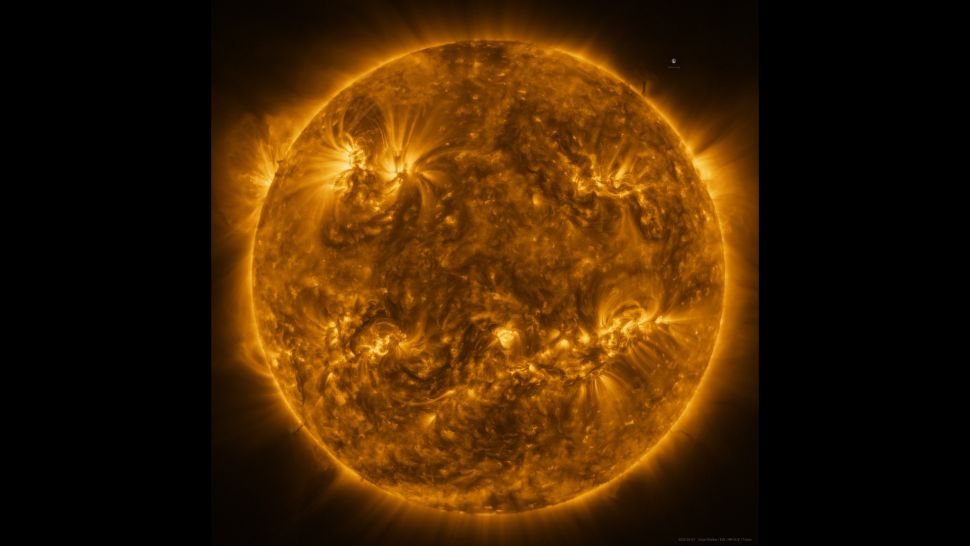Paris: European Space Agency’s (ESA) and NASA Solar Orbiter has snapped images of the Sun in unprecedented detail.
The images were taken March 7, when the spacecraft was crossing directly between the Earth and Sun at a distance of roughly 75 million km, half way between our world and its parent star, the ESA said in a statement.
One of the images, taken by the Extreme Ultraviolet Imager (EUI) shows the Sun’s full disc and outer atmosphere, the corona in the highest resolution image ever taken.
Another image, taken by the Spectral Imaging of the Coronal Environment (SPICE) instrument, represents the first image of a full Sun — the first-of-its kind in 50 years. It was taken at the Lyman-beta wavelength of ultraviolet light that is emitted by hydrogen gas.
The high-resolution telescope of EUI takes pictures at such high spatial resolution that, at that close distance, a mosaic of 25 individual images is needed to cover the entire Sun. Taken one after the other, the full image was captured over a period of more than four hours because each tile takes about 10 minutes, including the time for the spacecraft to point from one segment to the next.
EUI imaged the Sun at a wavelength of 17 nanometers, in the extreme ultraviolet region of the electromagnetic spectrum. This reveals the Sun’s upper atmosphere, the corona, which has a temperature of around a million degrees Celsius, the ESA said.
In the SPICE sequence of images, purple corresponds to hydrogen gas at a temperature of 10,000 degrees Celsius, blue to carbon at 32,000 degrees Celsius, green to oxygen at 320,000 degrees Celsius, yellow to neon at 630,000 degrees Celsius.
This will allow solar physicists to trace the extraordinarily powerful eruptions that take place in the corona down through the lower atmospheric layers. It will also allow them to study one of the most puzzling observations about the Sun: how the temperature is rising through the ascending atmospheric layers, the officials said.
On March 26, Solar Orbiter will reach another mission milestone: its first close perihelion. The spacecraft is now inside the orbit of Mercury, the inner planet, taking the highest resolution images of the Sun it can take. It is also recording data on the solar wind of particles that flows outwards from the Sun.
